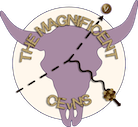Speaker
Description
Our research group has developed a novel approach to detect Coherent Elastic Neutrino-Nucleus Scattering (CEvNS) signals using cesium iodide (CsI) crystals operated at liquid nitrogen temperatures. This poster presents the results of comprehensive tests conducted on the CsI crystals, including low-temperature light yield, spatial uniformity of light emission, and background measurements post-shielding.
Methods:
Low-Temperature Light Yield: The light yield of the CsI crystals was measured at cryogenic temperatures, demonstrating an exceptional value of approximately 28 photoelectrons per keV electron-equivalent (PE/keVee), which meets the stringent requirements for CEvNS detection.
Spatial Uniformity: The uniformity of light emission across the crystal was evaluated by placing a calibrated Am-241 source at various positions on the crystal and recording the corresponding light yield. The results indicate excellent spatial uniformity across the crystal.
Background Measurements: Post-shielding measurements were conducted to assess the residual intrinsic radioactivity of the crystal and the remaining environmental background. Both were found to be within expected levels, ensuring a low background environment for CEvNS detection.
Conclusion:
The CsI crystals exhibit outstanding performance in terms of light yield, spatial uniformity, and low background levels, making them highly suitable for CEvNS experiments. These results validate the feasibility of using cryogenic CsI crystals as a robust and sensitive detector for CEvNS studies.
